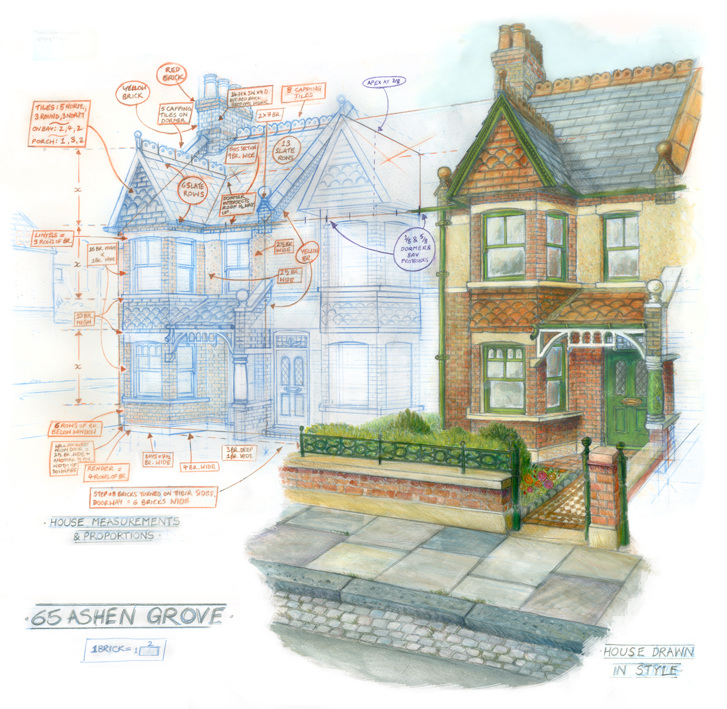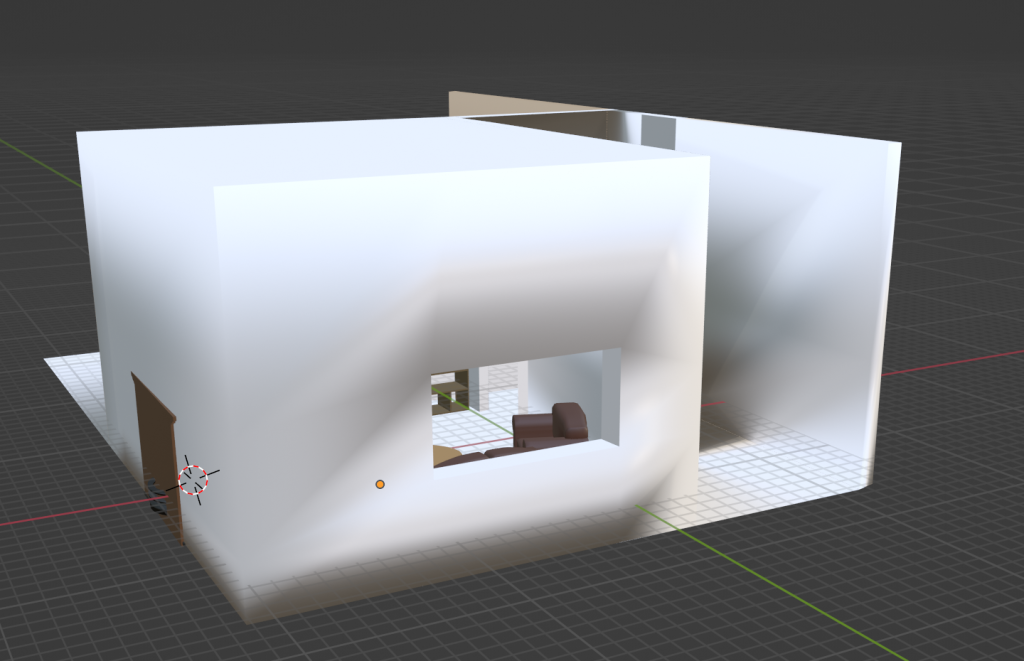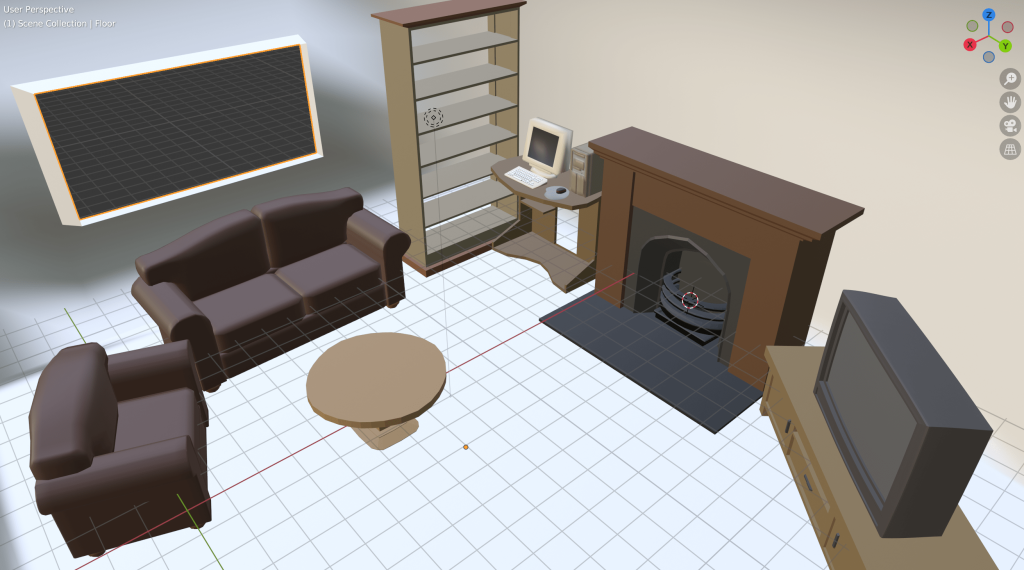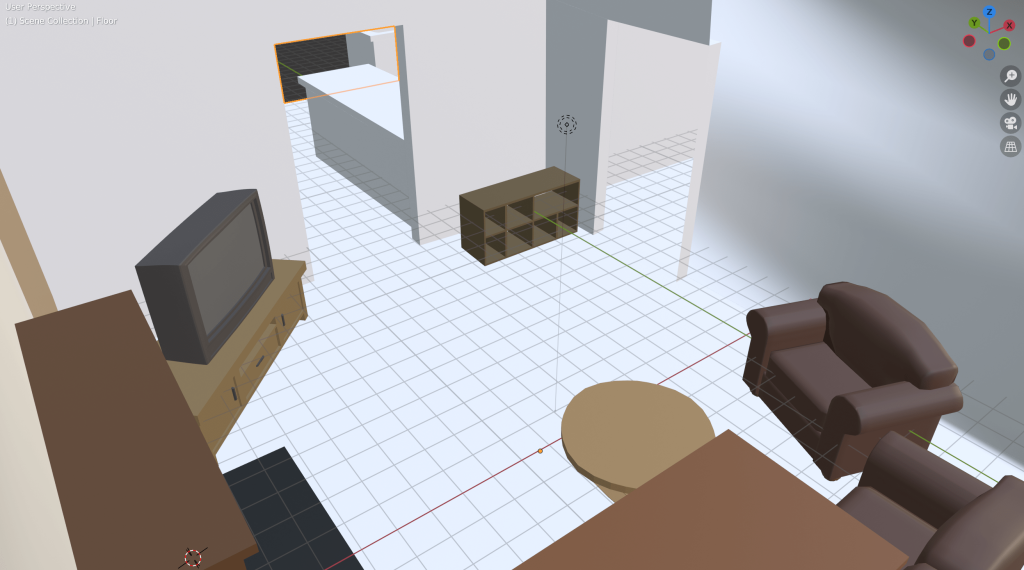So I designed a third draft. This time I looked up images of a traditional London house to see how it would affect the layout if I wanted to reposition the door, like how Untitled Goose Game used inspiration from real-world towns. My inspiration was the house in Ethel and Ernest; a real London house that Raymond Briggs’ parents lived in back in the 30’s-70’s, as well as the interior of their living room.






Initially confident, once I saw it all laid out I lost a lot of my faith. It wasn’t finished – there was going to be a piano next to the armchair; the coffee table was going to have a different shape; the cabinet in between doors would have an entirely different design. But I didn’t think it was going to work. I’d gotten too hung up on the design making sense for a human, and now it wouldn’t work for the rat.
I was attempting to create an enormous loop around the room, but because of the fireplace and desk designs, there wasn’t a place to hide around that area. It felt sparse. It felt like there weren’t many places to hide. And I didn’t like it anymore.
Eventually, the problem was that it felt too boxy and cramped, and some of the furniture didn’t quite fit in. I extended the front wall and added a wide, airy window, as well as a long window seat, and pushed the cabinet into a sideways position to open up the room a bit more. Finally, replacing the coffee table from a circle shape to square matched the sofa’s length, tying them together better.

The arrangement of furniture also needed to be so that the rat would be able to parkour around the room. The mantel shelf can only be reached by climbing on the TV first, and the piano only from the stool or neighbouring armchair. The lights are spaced equidistant from each other to parkour around them once you get on top of one.
I also took inspiration from my various moodboards in creating the props. The fireplace and kitchen cabinet are based on my own at home, and much of the general clutter was taken from 2000s living room inspiration. See here for my research.
When coming from the sewers and out of the vent, I set up a “cinematic shot” similar to techniques used in Stray. Inside the vent, the world is narrow. It opens up a little when you step out behind the TV, and then gives you a proper view of the room when you peek around – the entire living room before you!
To set up the puzzles, I used the Analyise->Solve->Execute method from my analysis of Little Nightmares. Players are guided into what they need to find via the UI “to investigate” list and dialogue cues – the “analysis” phase. This should take up 35% of the time on the quest.
strawberry cake quest
Once they’ve found the object of investigation, 50% of the time should be spent on solving it. There’s no direct conversation between the player and the game about what to do; they must decide for themselves, so some experimentation will be involved in figuring out what they CAN do. For example, picking up the strawberries and connecting them to the cake, or moving the cake while trying to interact.
strawberry cake quest
Finally, the remaining 15% should be spent completing their action. There are only a few strawberries to find, all in different areas to maintain interest, and pushing the cake off is even simpler. Having a difficult execution is not the main focus of the game; the exploration, stealth, and puzzle elements are.
Leave a Reply